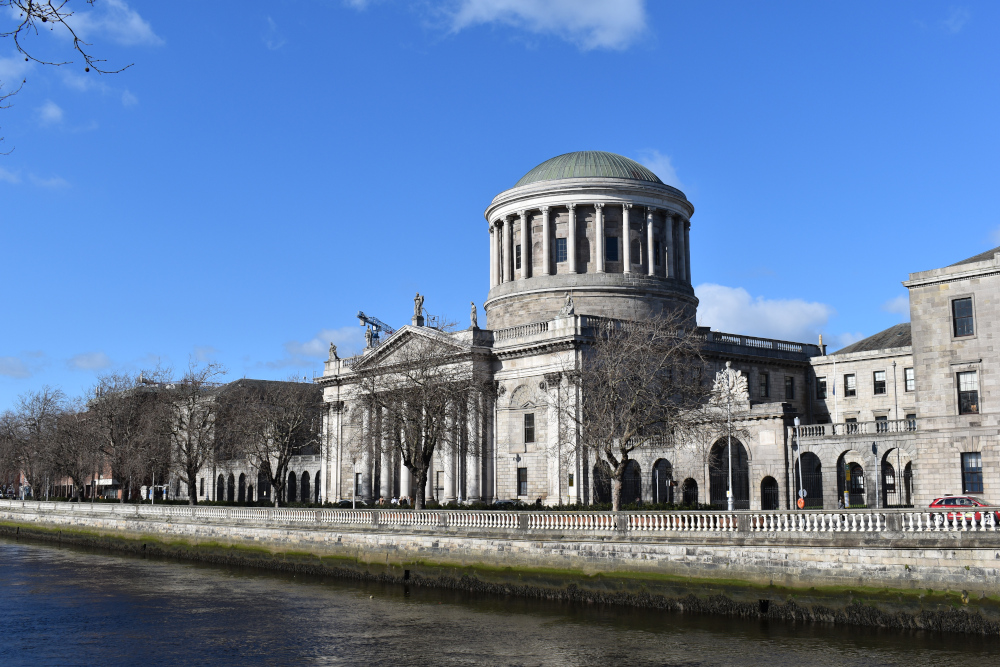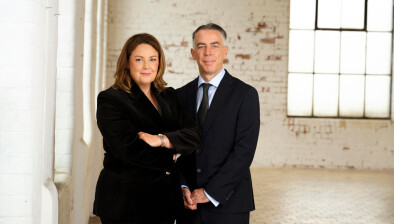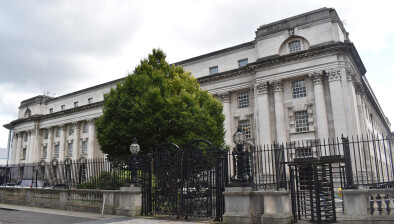High Court: St James’s Hospital negligent for failure to diagnose rare condition at earlier stage in 42-day admission

The High Court has awarded €26,000 in general damages to a Spanish national whose visceral leishmaniasis was diagnosed within three days of admission to a Valencian hospital, but which remained undetected by St James’s Hospital during his 42-day admission there.

About this case:
- Citation:[2025] IEHC 331
- Judgment:
- Court:High Court
- Judge:Ms Justice Emily Egan
Delivering judgment for the High Court, Ms Justice Emily Egan accepted that the plaintiff’s slow response to treatment ought to have become evident after more than two weeks, and that by that point, a lack of prior clinical experience of visceral leishmaniasis did not excuse failure to specifically consider it in the differential diagnosis.
Background
On 19 February 2014, the plaintiff, a young Spanish national newly diagnosed with HIV, was admitted to St James’s Hospital (SJH).
While in SJH, the plaintiff was diagnosed with hemophagocytic lympho-histiocytosis (HLH) triggered by herpes virus type 8 (HHV-8) in the context of HIV.
The plaintiff alleged that none of the consultants who managed, investigated and cared for the plaintiff during his admission considered the possibility of visceral leishmaniasis (VL) during his ensuing 42-day admission to SJH, a condition which is fatal if left untreated in 95 per cent of cases.
Instead, the plaintiff received chemotherapy for the treatment of his HLH, acquired infections in hospital requiring further treatment, received 14 units of blood transfusions, had restricted mobility, required transfer to intensive care and experienced ongoing pain and suffering.
The plaintiff was eventually transferred from SJH to Hospital de la Fe in Valencia, Spain on 1 April 2014, where VL was diagnosed three days later and was treated with Ambisome, an anti-fungal medication. He recovered sufficiently to be discharged within one week.
The plaintiff claimed damages for SJH’s failure to diagnose VL.
Submissions
The plaintiff claimed that two features ought to have alerted the infectious disease and haematology clinicians in SJH to the diagnosis of VL — firstly, the epidemiological association between HIV, VL and Spain, combined with the fact that the plaintiff was HIV positive and was from Spain, and secondly, the plaintiff’s “massive splenomegaly” or enlarged spleen.
The plaintiff contended that SJH should have diagnosed VL within four days and should have commenced AmBisome during the same period for the treatment thereof, which he suggested would have led to his recovery and his leaving SJH within two weeks at latest.
SJH maintained that the plaintiff’s condition was life-threatening on admission requiring urgent diagnosis and treatment and that the clinicians made a timely diagnosis of HLH leading to a reasonable working hypothesis on foot of which life-saving treatment was administered.
SJH argued inter alia that while the plaintiff also had VL, it was not a breach of the standard of care not to consider that rare diagnosis which had not been encountered in Ireland prior to 2014, that the plaintiff’s splenomegaly was attributable to a range of other more common presentations and that having commenced treatment for HLH, it was reasonable to allow an appropriate period for the treatment to work.
SJH also considered that the plaintiff had expressed a desire to return to Spain for treatment as soon as possible and had the plaintiff not been discharged from SJH, it was likely that as other credible triggers fell away over time, the diagnosis of VL would have emerged. SJH pointed out that the speed of diagnosis in Spain was not significant as the Spanish clinicians had the benefit of all the investigations already carried out by SJH and VL was not unknown to Spain.
The High Court
The High Court was required to consider whether SJH should have diagnosed VL within four days of admission or at a later stage, and if so, what would have followed in terms of treatment and recovery.
The court was also tasked with the question of the differential between what would have occurred in the counter-factual scenarios posed to the court and what did in fact occur, and what the appropriate compensation for that differential would be.
Ms Justice Egan recognised that the standard of care was to be determined on the principles set out in Dunne v. National Maternity Hospital [1989] IR 91 and summarised in Morrissey v. HSE [2020] IESC 6, requiring the court to assess “whether no reasonable professional of the type concerned could have carried out their task in the manner which occurred in the case in question. That overall test requires a court to determine what standard a reasonable professional would apply.”
The judge noted the parties’ agreement that the case would turn on the first Dunne principle, being whether the clinicians in SJH were “guilty of such failure as no medical practitioner of equal specialist or general status and skill would be guilty of if acting with ordinary care”.
Having heard the evidence, the court considered the correct standard of approach to diagnosis and treatment for infectious diseases consultants and a consultant haematologists back in 2014.
Noting that “No clinician can be expected to be in touch with every single piece of literature and every publication or Guideline. Rather they would be expected to follow those most relevant to their own practice”, Ms Justice Egan explained that there was a paucity of adult literature on the association between HLH and VL in 2014 and so knowledge of same was not required by the standard of approach.
Finding that on the evidence, that it was part of the standard of approach in Ireland in 2014 for the SJH clinicians to have known of the epidemiological association between HIV, VL and Spain, the High Court emphasised that “the issue is not that simple… I must also determine how that knowledge informs the standard of approach in relation to diagnosis and treatment. In other words, what would the knowledge of this association have led ‘an ordinary competent professional of the type and skill of these clinicians to have done?’”
The court was satisfied that although clinicians treating HIV patients may know of potential associations with dozens of opportunistic infections, the standard approach requires the application of discrimination to the task of diagnosis and the keeping of diagnoses under review, “they are not compelled, at least at an early stage of management, to explore each and every potentially viable diagnosis that might conceivably apply.”
Being satisfied that SJH clinicians did not need to expressly consider VL as a trigger for HLH on epidemiological grounds alone, the court was also unconvinced that SJH should have looked beyond a reasonable diagnosis of HLH to interpret the plaintiff’s enlarged spleen as strongly indicative of VL.
On the facts, the court found that even if the SJH clinicians had been aware of the epidemiological association from the first day of the plaintiff’s admission, their working diagnosis was reasonable and remained tenable and credible up to the time that Prof B, a clinician with knowledge of VL, first became involved and also for some time after.
However, Ms Justice Egan determined that by 14 March 2014, at the latest, a combination of factors ought to have suggested to the SJH clinicians that the diagnosis of HLH triggered by HHV-8 was less likely, where inter alia testing on that date showed that the plaintiff’s HHV-8 levels were negative, and where the plaintiff’s condition had not substantially or consistently improved coming into his third week of treatment under the HLH protocol.
Accordingly, the High Court found that in the period between 10 March 2014 to 14 March 2014, a considerable suspicion of VL ought to have arisen leading to the commencement of empirical AmBisome, which was not commenced until over three weeks later on 4 April 2014, and that negligence arose in this regard.
As to causation, the court found that if the plaintiff had been commenced on AmBisome during the week of 10 March 2014, his improvement within a week and substantial recovery within two weeks could reasonably have been anticipated, sparing him from three weeks of hospital admission with painful and debilitating symptoms and “anxiety, distress and worry as to his health”.
As to quantum, the court preferred the suggestion by SJH that it ought to have regard to the Book of Quantum category most closely capturing the plaintiff’s experience, being that for food poisoning requiring hospital admission.
Agreeing that the plaintiff experienced the symptoms in the “moderate” category but highlighting that the plaintiff had been in ICU and was clearly “in extremis”, Ms Justice Egan found that general damages for past pain and suffering were to be assessed at €26,000, with no claim having been made for future pain and suffering.
Conclusion
Accordingly, the High Court granted an award of €26,000 in general damages to the plaintiff and made an order applying reporting restrictions to ensure the plaintiff’s anonymity pursuant to s.27 of the Civil Law (Miscellaneous Provisions) Act 2008 in light of the plaintiff’s condition.
AMS v Birthistle [2025] IEHC 331









